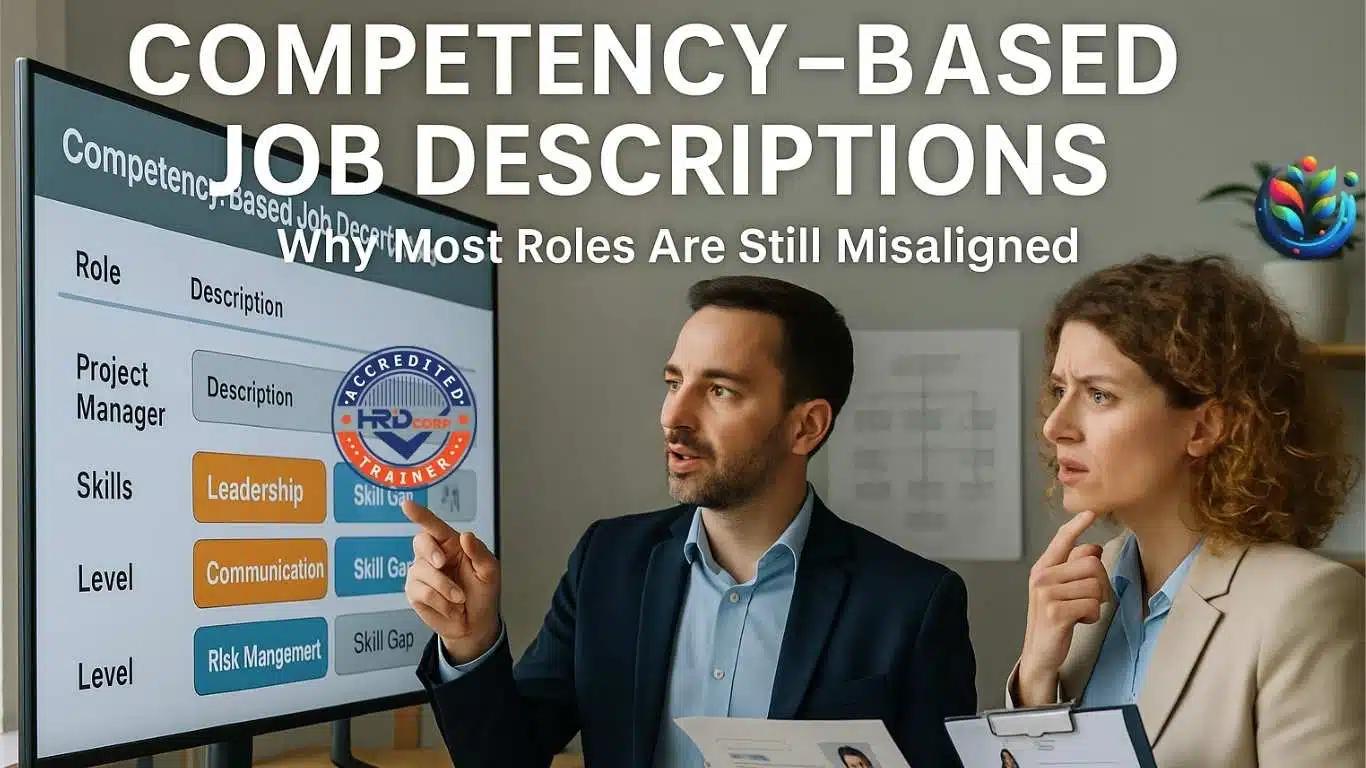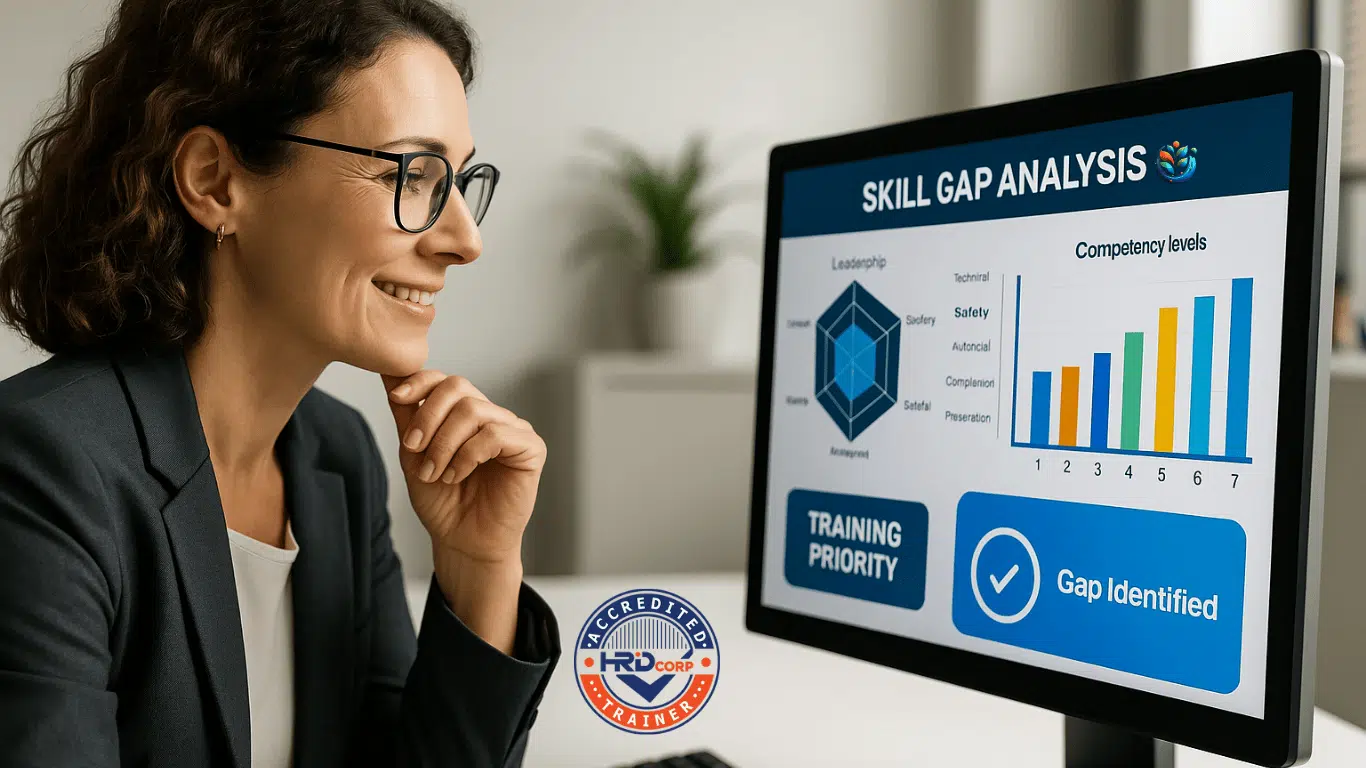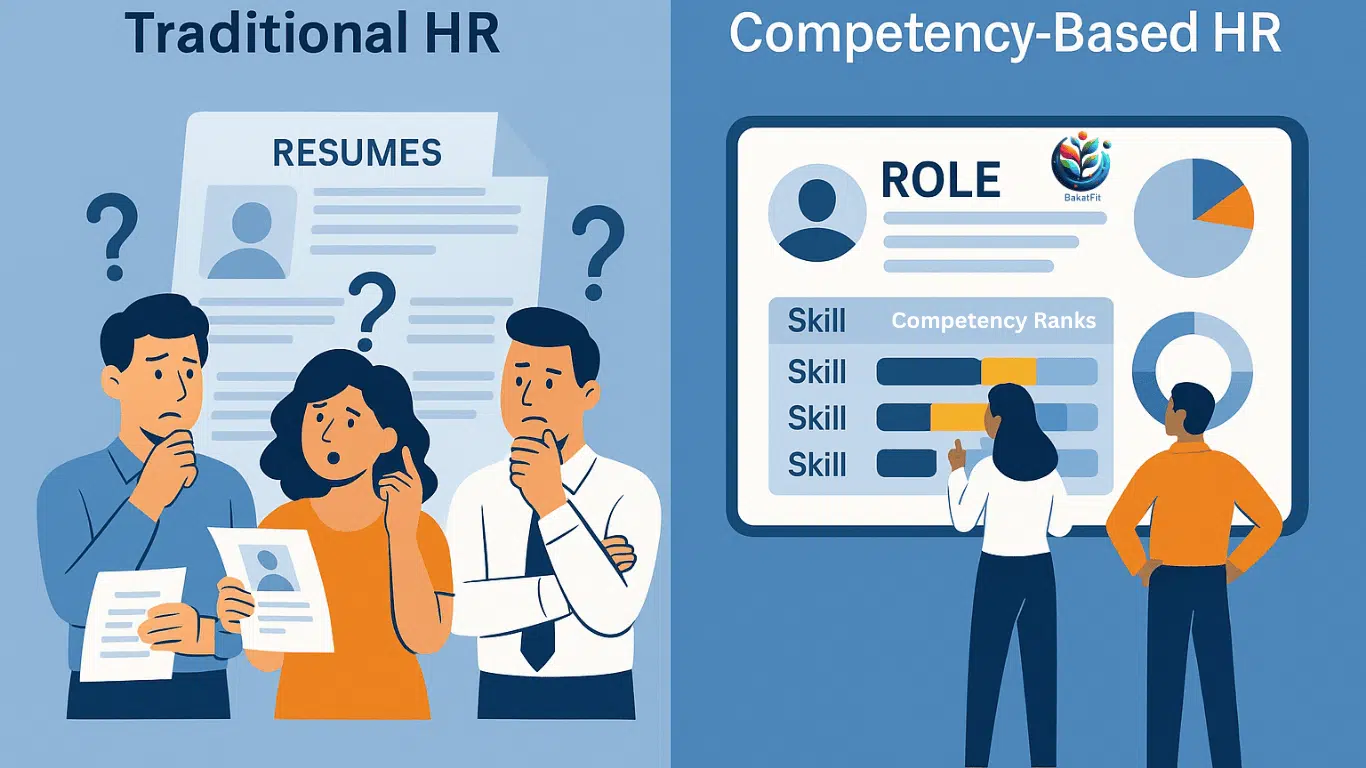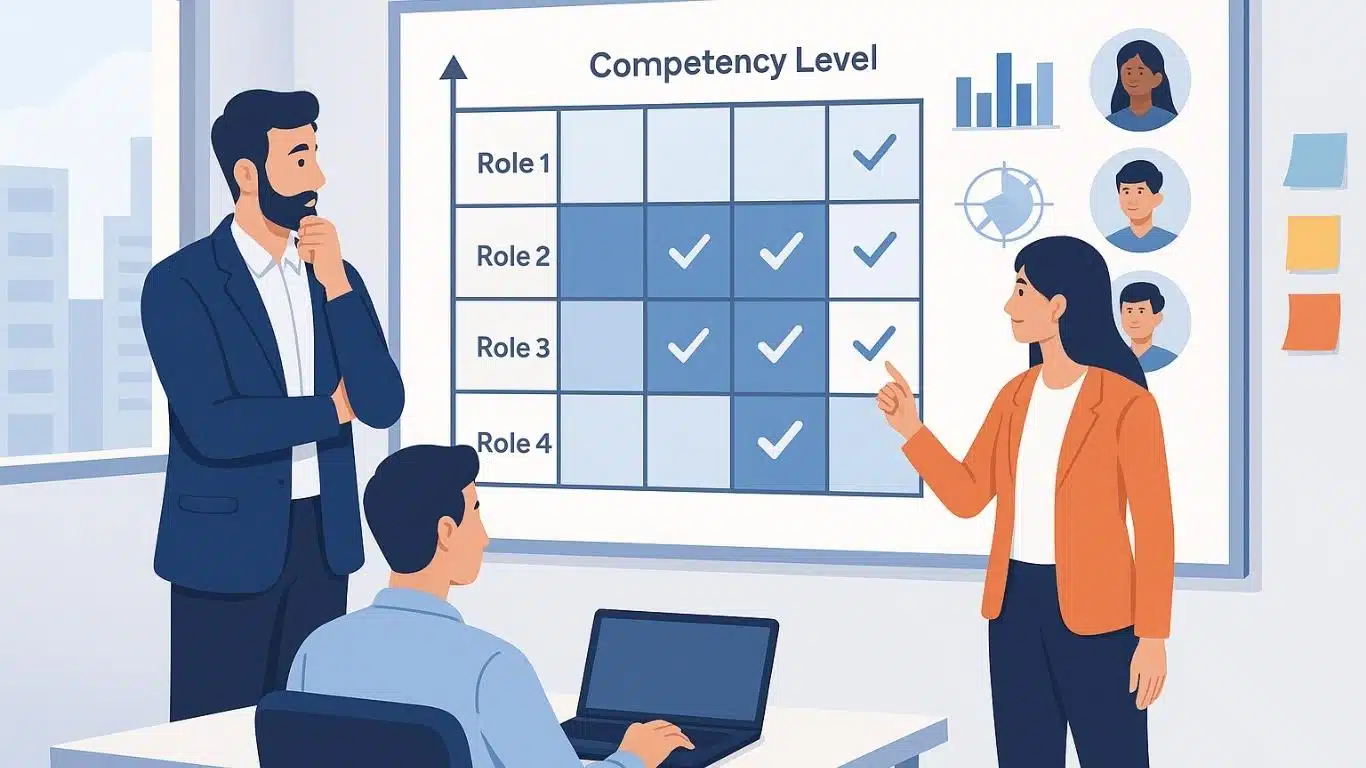In an era where talent acquisition costs are rising, with average range of RM3500 ($875) to RM20,000 ($4,700) per hire depending on the locality and several other factors, organizations cannot afford misaligned job descriptions. Yet, according to Sales Globe, a 2023 Willis Towers Watson survey revealed that 62% of companies alter job descriptions and role parameters mainly to match compensation structures—rather than reflecting the real work requirements. This trend, can negatively influence employee performance, retention, and overall business outcomes.
Most organizations use job descriptions albeit very ineffectively. In fact, traditional job descriptions are often outdated, vague, or filled with generic phrases like “must be a team player” or “strong communication skills.” These leads to misaligned roles, underperformance, and poor hiring decisions.
A competency-based job description changes that. It clearly defines what a person must know, do, and demonstrate to succeed in a specific role—aligned with measurable job competencies.
The Hidden Cost of Poor Role Alignment
Traditional job descriptions focus on duties and responsibilities but fail to capture the essential competencies that drive success. This misalignment creates a cascade of problems throughout the employee lifecycle. When job competency requirements are unclear, hiring managers make decisions based on incomplete information, leading to costly mis-hires and prolonged onboarding periods.
Consider the typical software developer job description that lists programming languages and years of experience but ignores critical competencies like problem-solving methodology, collaborative communication, or adaptability to changing requirements. This narrow focus explains why research by Leadership IQ found that 46% of new employees fail within their first 18 months, with competency mismatches being the primary culprit.
Understanding Job Competency vs. Job Requirements
The distinction between job competency and traditional job requirements represents a fundamental shift in how organizations think about roles. Job requirements typically include education, experience, and technical skills. Job competency, however, encompasses the deeper attributes that predict performance: behavioural traits, cognitive abilities, and situational judgment capabilities.
Effective competency-based job descriptions integrate the key job responsibilities, three core competency elements (knowledge, skills, and behaviours), the expected proficiency levels and clear alignment with organizational goals and role expectations.
Knowledge competencies define what employees need to understand about industry standards, company processes, and technical concepts. Skill competencies outline the practical abilities required to execute tasks effectively. Behavioural competencies capture the personal attributes and work styles that align with organizational culture and role demands.
Unlike traditional job descriptions that focus on tasks or qualifications, competency-based versions emphasize how success is defined and measured in the role.
Why Role Alignment Remains Elusive
Despite widespread recognition of competency-based approaches, most organizations continue using outdated job description templates. That is why most job descriptions fail. Several systemic issues perpetuate this misalignment. HR departments often lack the analytical tools to identify core competencies for each role, relying instead on overly generic templates that fail to capture role-specific requirements.
Managers frequently confuse competency identification with task listing, creating job descriptions that read like procedural manuals rather than competency frameworks. They are task-focused – listing duties but not expected performance behaviours.
Additionally, organizational silos prevent cross-functional collaboration needed to understand how roles interact and what competencies enable effective performance across departments.
Most job descriptions are outdated – not revised with evolving business needs. The rapid pace of business change compounds these challenges. Job competency requirements evolve as technology advances, market conditions shift, and organizational priorities change. Static job descriptions become obsolete quickly, creating growing disconnects between stated requirements and actual performance needs.
The Business Impact of Misaligned Job Descriptions
Poor role alignment creates measurable business consequences across multiple dimensions. Recruitment efficiency suffers when job descriptions attract candidates with wrong competency profiles, increasing time-to-fill metrics and recruitment costs leading to poor recruitment outcomes. Onboarding effectiveness diminishes when new hires discover role realities don’t match job description expectations.
Performance management becomes problematic when evaluation criteria don’t align with competencies that actually drive results. Career development stagnates because employees lack clear competency progression pathways. Team dynamics suffer when role boundaries are unclear and competency overlaps create confusion about responsibilities and accountability. Organizations that implement competency-based frameworks see measurable improvements in retention.
A research published in the Journal of Clinical and Translational Science, showed that implementing a competency-based job framework reduced employee turnover from 23% to 16% – a 45% reduction in turnover rates.
These improvements translate directly to bottom-line results through reduced recruitment costs, improved team performance, and enhanced employee engagement. These improvements translate directly to bottom-line results through reduced recruitment costs, improved team performance, and enhanced employee engagement.
Building Effective Competency-Based Job Descriptions
How to create competency-based job descriptions? Creating aligned job descriptions requires systematic competency analysis that goes beyond traditional job analysis methods. Start by conducting competency interviews with high performers to identify the knowledge, skills, and behaviors that differentiate exceptional performance from average results.
Analyze critical incidents where role success or failure occurred, focusing on the competencies that influenced outcomes. Examine workflow interactions to understand how the role connects with other positions and what competencies enable effective collaboration. Review performance data to identify patterns between specific competencies and measurable results.
Structure competency-based job descriptions using clear competency categories. Core competencies apply across all organizational roles, representing fundamental attributes like integrity, communication, and continuous learning. Role-specific competencies define the unique knowledge, skills, and behaviors required for particular positions. Leadership competencies outline the additional attributes needed for management or supervisory responsibilities.
Finally, validate with managers and role experts and incorporate into hiring, onboarding, and evaluation workflows.
Implementing Competency Frameworks Across Organizations
Successful competency implementation requires organizational commitment and systematic change management. Begin with pilot programs in critical roles where misalignment costs are highest. Develop competency models collaboratively, involving managers, high performers, and HR professionals in the identification and validation process.
Create competency libraries that enable consistency across similar roles while allowing for role-specific customization. Establish regular review cycles to ensure competency requirements remain current as business conditions evolve. Train hiring managers to evaluate competencies effectively during recruitment and selection processes.
Integrate competency frameworks into performance management systems, ensuring that evaluation criteria align with job description competencies. Link learning and development programs to identified competency gaps, creating clear pathways for skill development and career advancement.
Measuring Role Alignment Success
Organizations must establish metrics to assess the effectiveness of competency-based job descriptions. Track recruitment metrics including time-to-fill, quality of hire scores, and candidate fit assessments. Monitor onboarding success through time-to-productivity measures and early performance indicators.
Evaluate retention rates and exit interview feedback to identify ongoing alignment issues. Assess performance management effectiveness by analyzing the correlation between competency evaluations and business results. Survey managers and employees to gauge satisfaction with role clarity and competency expectations.
Regular competency audits ensure ongoing alignment as roles evolve. Compare actual job performance requirements with documented competencies, identifying gaps that require job description updates. This continuous improvement approach maintains relevance and effectiveness over time.
The Future of Competency-Based Role Design
The evolution toward competency-based job descriptions represents more than a tactical improvement in HR practices. It reflects a strategic shift toward evidence-based talent management that aligns human capital investments with business objectives. Organizations that embrace comprehensive competency frameworks position themselves for sustained competitive advantage through improved talent acquisition, development, and retention.
As business environments become increasingly complex and change-driven, the precision offered by competency-based approaches becomes even more critical. The organizations that thrive will be those that can accurately identify, attract, and develop the competencies that drive performance in their specific context.
The transition from task-based to competency-based job descriptions requires investment and commitment, but the returns are substantial. Improved role alignment creates a foundation for enhanced organizational performance, employee satisfaction, and strategic agility that extends far beyond individual job descriptions to transform entire talent management ecosystems.
Final Thoughts
If your job descriptions aren’t aligned to competency expectations, you’re hiring and managing based on assumptions. That leads to poor performance and missed potential.
Start using competency-based job descriptions to clarify expectations, improve hiring accuracy, and strengthen team performance.
Build Competency-Aligned Roles Now
Build job clarity with BakatFit.
Start your role-based competency assessments today.




